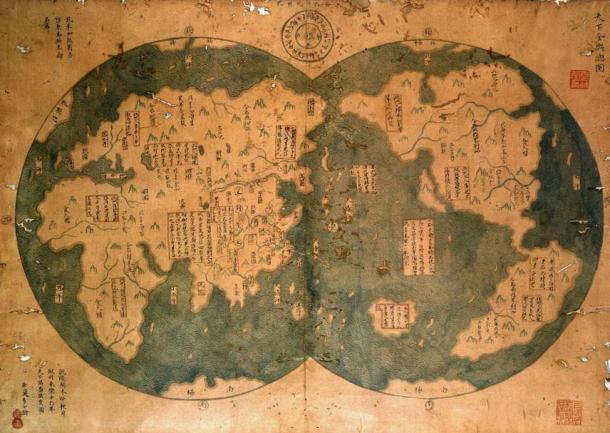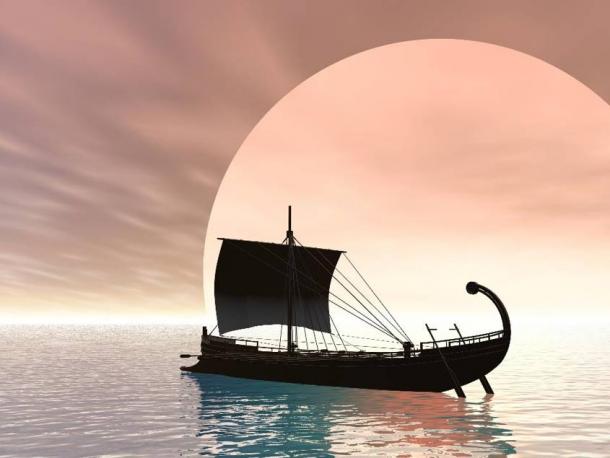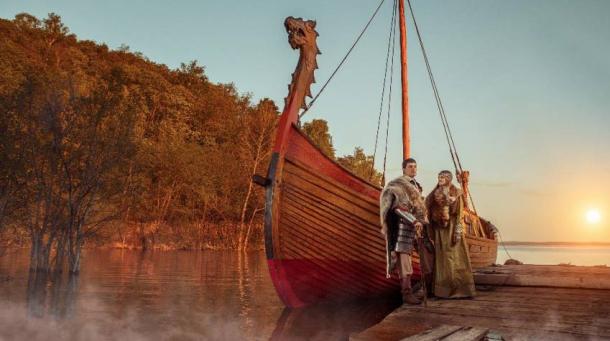Even today, many people still believe that Christopher Columbus was the person who “discovered” America when he landed there in 1492. That belief overlooks the fact that indigenous people had already been living there for at least 20,000 years and other non-indigenous people had already made expeditions to the Americas – some hundreds of years before Columbus – and some had even built settlements. Ancient Greek, Chinese, Viking, and Welsh explorers have all been proposed as forerunners to the famed voyage in 1492. So who really did get there before Columbus?

Which ancient explorers reached North America before Columbus? ( Public Domain )
The Chinese
One intriguing argument suggests that Chinese explorers reached the Americas about 70 years prior to Columbus’ famous voyage. This is based on a 1418 map charted by Admiral Zheng He which appears to show North American rivers and coasts and some of South America. Historians state the map was created during the Ming Dynasty (1368-1644).
There are also older indications that ancient Chinese explorers may have reached the Americas. In one example, a lizardite Chinese votive sword was discovered in 2014 in an eroded bank of a small stream in Georgia. The many symbols on the sword and its shape suggest it comes from the Liangzhu culture (3400-2250 BC) or the Xia (2070-1600 BC), Shang (1600-1046 BC), or Zhou Dynasty (1046-256 BC). No one can say how the artifact ended up where it did.
A second indication of an earlier date for the Chinese arriving in America comes from petroglyphs in Albuquerque’s Petroglyph National Monument, as well as in Arizona, Utah, Nevada, California, Oklahoma, and Ontario, which for some scholars appear to be ancient Chinese scripts inscribed by a group of Chinese explorers thousands of years ago. The calligraphy and wording used suggest the characters would have probably been carved close to the end of the Shang Dynasty in 1046 BC.

Reproduction of a supposed Chinese map from 1418 showing some of the Americas. ( Public Domain )
The Greeks
Three elements that suggest the ancient Greeks may have made it to the Americas are: their famed navigational skills, an extensive knowledge of astronomy, and the fact that they were the only ancient civilization to understand that the Earth was round.
Some scholars say an advanced knowledge of astronomy may have helped the Greeks identify Atlantic currents that would propel them west. And several scholars have also pondered if Plutarch’s work De Facie describing a stranger recently returned from a ‘great continent’ refers to an explorer who had visited Newfoundland, Canada.
But the strongest evidence comes from the ancient Greek reference to the Fortunate Islands, which an Italian physicist and philologist says were the Antilles. Unfortunately, Ptolemy is said to have misidentified them as the Canary Islands off Africa’s West coast. It seems the mistake was made when Ptolemy moved the Canary Islands by 15 degrees latitude. But he was following a common belief at the time that people were incapable of navigating an ocean.

Some scholars say an advanced knowledge of astronomy may have helped the Greeks identify Atlantic currents that would propel them west. ( Paul Moore /Adobe Stock)
The Vikings
It is well established that almost 500 years before Columbus set sail, a Viking named Leif (“the lucky”) Erikson visited, and temporarily colonized, a small village in Newfoundland , Canada. But the Norsemen may have been there even earlier. According to the Norse Graenlendinga Saga, Vikings first arrived in the New World in 986 AD when Bjarni came upon a beautiful wooded area. He returned home and his tale soon spread, inspiring Leif Erikson to try to retrace the explorer’s passage.
According to the Sagas of Icelanders, Leif got thrown off course by a violent storm and his first visions of Canada were not a pleasant forest but “flat and stony land,” perhaps modern-day Baffin Island. Leif and his crew continued their expedition and ended up in an area with many trees, wild grapes, and grains. They brought the grapes back home and called the land Vinland in honor of the fruit.
Today, the area Leif settled has been identified as L’Anse aux Meadow , on the northernmost tip of the island of Newfoundland. Archaeologists working there have unearthed eight houses as well as food and hunted animal remains. The Sagas clearly indicate Norsemen continued to explore the new land during the summer months for several years, making contact with indigenous tribes and trading and often fighting with them. Lacking resources and manpower to fend off the attacking locals, the Vinland settlement was abandoned in less than 10 years. But no one knows for sure how far south the Vikings made it into the Americas.

The Vikings were in North America before Columbus. ( diter /Adobe Stock)
The Welsh
Legends say the Welsh Prince Madoc (Madog) reached the New World with a fleet of ships between the years 1170 and 1171 AD. Specifically, Madoc and his brother Riryd are said to have landed in Mobile Bay, Alabama. When they returned to Wales in 1171 they recruited 100 men, women, and children to form a colony in the new land across the sea. They never returned.
But the story of Welsh inhabitants in the Americas doesn’t end there. It has also been suggested that several Native American tribes may be descended from the members of the prince’s expedition. The Mandan, a tribe that originally lived along the Missouri River, are most commonly connected to this story mainly because of their relatively light colored skin and their hair turning grey. Other European explorers also claimed that the Mandan language was similar to Welsh and the tribe had Welsh-inspired architecture, such as stone forts and permanent towns and villages with planned streets.

Mandan bull boats and lodges. ( Public Domain ) The Mandan people have been linked to the story of the Welsh arriving in America before Columbus.
We may never know who the first non-indigenous person was to reach North America. But one thing is for sure – it was not Christopher Columbus .
Top Image: Which explorers reached North America before Columbus? Source: Alexstar / Adobe Stock
 RSS Feed
RSS Feed















 September 27th, 2020
September 27th, 2020  Awake Goy
Awake Goy  Posted in
Posted in  Tags:
Tags: 













